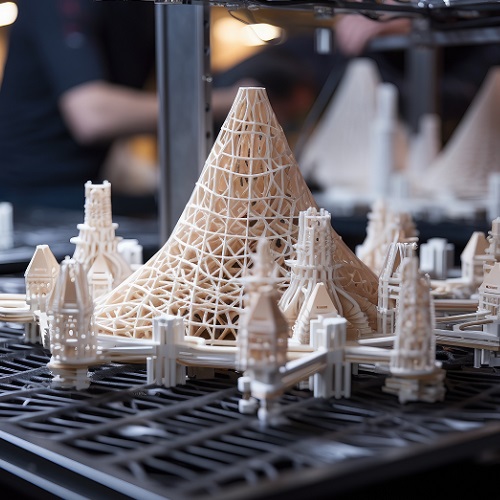3D printing for the Architectural industry
We can print the models in ABS Resin (SLA) and multicolor (polyjet) & so many material options are available for prototyping.
-The maximum build size is 800x800x1700mm.
-Get Free assistance from our engineering team.
-We can also design the required models from the basic drawing/ Sketch.


3D printing, also known as additive manufacturing, has revolutionized many industries, including architecture. The technology offers architects and builders new ways to approach design, construction, and project management. Here are some key applications of 3D printing in the architectural industry:
Applications of 3D printing for the Architectural industry
1. Model Making
Architectural models have traditionally been made by hand, a time-consuming and labor-intensive process. 3D printing streamlines this by allowing for the rapid production of highly detailed scale models. This helps architects and clients visualize the final product more accurately and make informed decisions early in the design process.
2. Prototyping
Prototyping with 3D printing enables architects to quickly test and iterate on design concepts. They can create multiple versions of a design to explore different structural and aesthetic options, ensuring that the best possible solution is chosen before committing to construction.
3. Custom Components
3D printing allows for the creation of custom architectural components that would be difficult, if not impossible, to produce with traditional manufacturing methods. This includes complex geometries, intricate patterns, and unique textures. Custom components can enhance the aesthetic appeal and functionality of buildings.
4. Renovation and Restoration
In renovation and restoration projects, 3D printing can be used to replicate historical architectural elements that are no longer available or are too expensive to produce by hand. This helps preserve cultural heritage while updating buildings to meet modern standards.
5. Sustainability
3D printing can contribute to more sustainable building practices. By using materials efficiently and reducing waste, it supports eco-friendly construction methods. Additionally, 3D-printed structures can incorporate recycled materials, further reducing the environmental footprint.
6. Complex Geometries and Parametric Design
Architects can leverage 3D printing to explore complex geometries and parametric design, which are challenging to achieve with traditional construction methods. This enables the creation of innovative and unique architectural forms that push the boundaries of conventional design.
7. Rapid Iteration and Cost Efficiency
3D printing allows for rapid iteration during the design phase, enabling architects to test multiple design iterations quickly and at a lower cost. This flexibility leads to more refined and optimized designs before the construction phase begins.
8. Education and Research
In architectural education, 3D printing is a valuable tool for teaching students about design and construction techniques. It allows them to experiment with different materials and construction methods, fostering innovation and creativity. Additionally, ongoing research in 3D printing technologies continues to expand its applications and capabilities within the architectural field.

